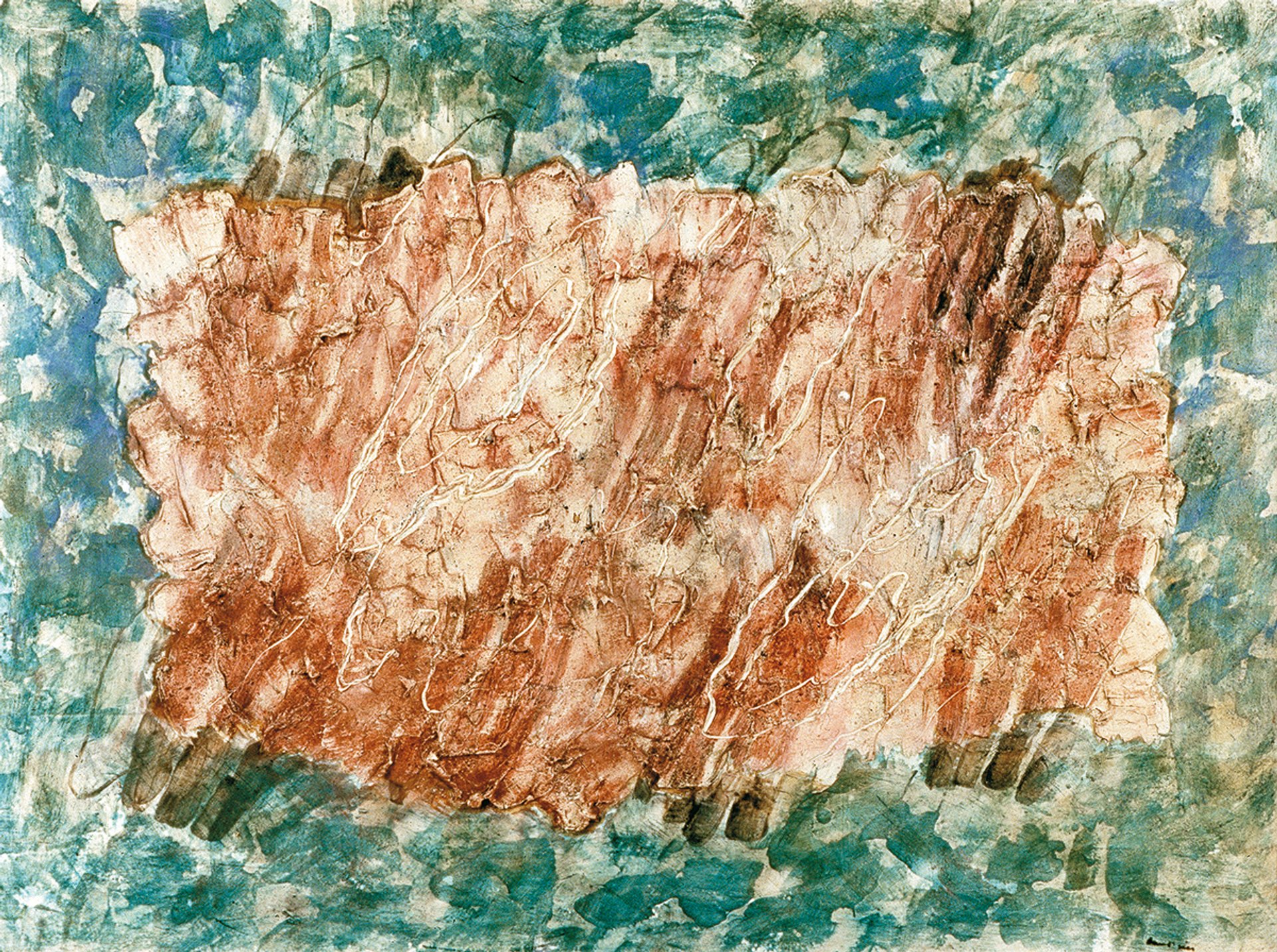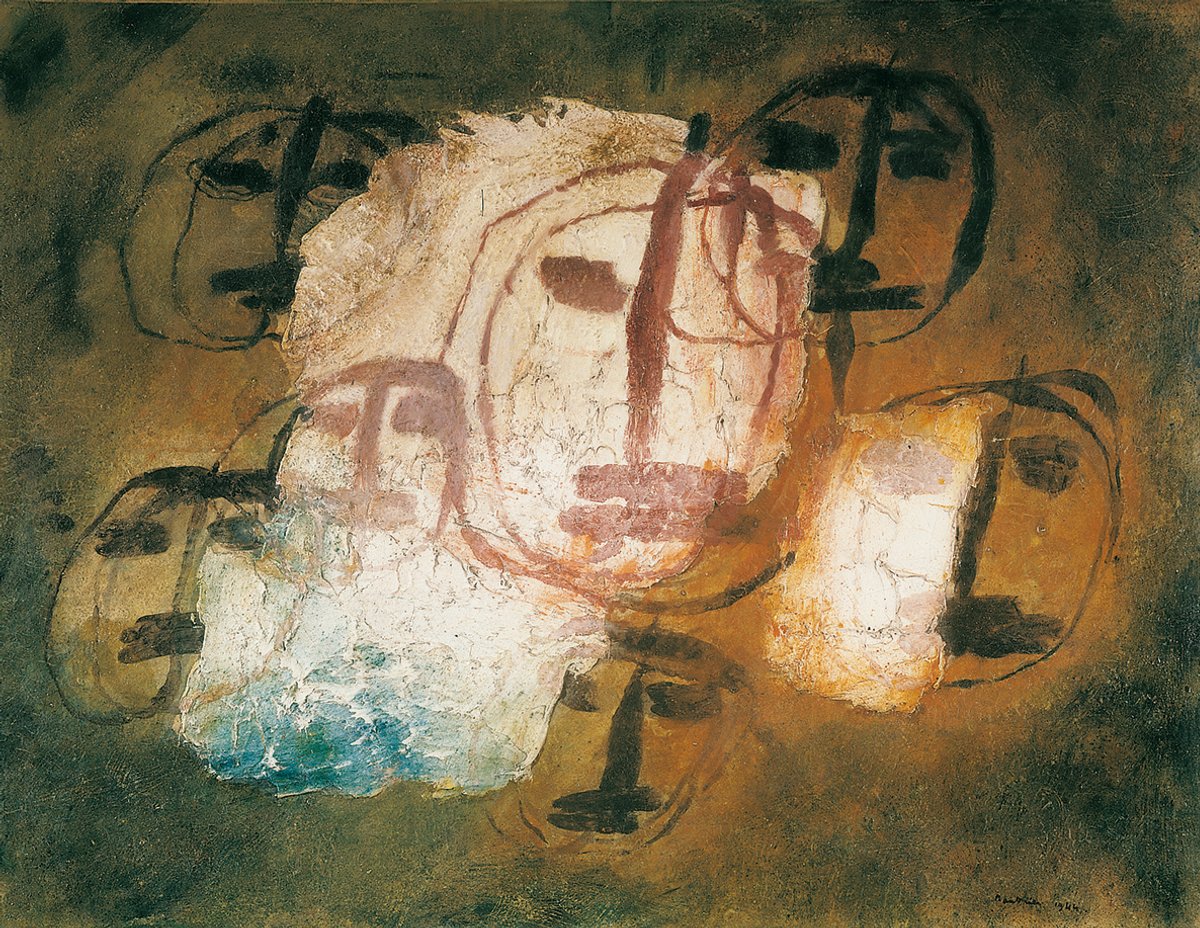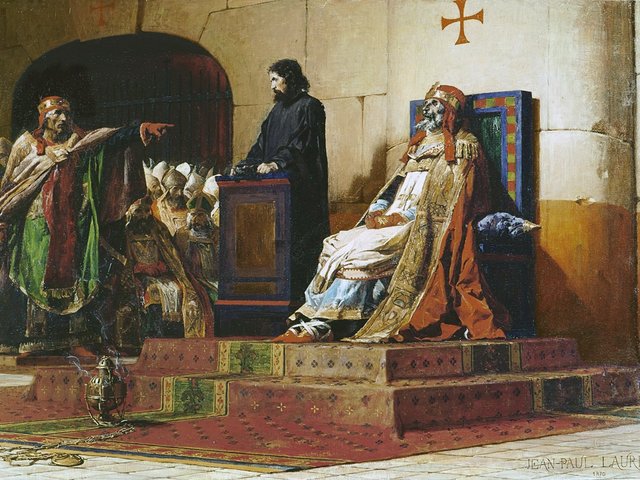For over 30 years the art world has been waiting for Marie-José Lefort’s Jean Fautrier paintings catalogue raisonné, now published by Éditions Norma (co-directed by Pierre Martin Vivier, the vice-president of postwar and contemporary art for Christie’s France). The exhibition l’Enragé, Hommage à Jean Fautrier (Christie’s Paris, 8-22 September) celebrated the launch, showing works from private collections, many unseen for decades. In 1957, Fautrier held a two-venue exhibition called Trente ans de Figuration Informelle, demonstrating that for 30 years his so-called Informel painting had anticipated contemporary trends: almost 70 years on, with this magisterial volume, a re-evaluation of the artist is anticipated.
Fautrier’s paintings are revealed in magnificent large-scale colour reproductions, often in series presented year by year, from 1921 to his death in 1964 and encompassing 1,197 works, though new discoveries constantly appear on the market. In summary, Fautrier’s dark, often violent early paintings subvert the recognisable genres of landscape, still-life, nude or portrait, as they engage with notions of deformity, ugliness, pain and death.
His most famous series, Hostages, was created in and outside Paris during the Second World War; colours and lines (a contour? a profile?) were laid over thickly worked, impasted grounds suggesting flesh, with a disturbing eroticism. These so-called hautes pâtes (literally “raised pastes”), which together with their titles imply bodies or presences, vibrate with the horror he apparently witnessed. La juive and Sarah (both 1943) pay tribute to Jewish female victims of atrocities, before the focus on Hostage Heads. (Fautrier’s father may, indeed, have been Jewish.) The Hostages series was reprised in 1957, reacting to the Soviet invasion of Budapest. Fautrier’s later work played on striated signs over hautes pâtes in pastel colours, where happier titles, often based on jazz tunes, offer clues to mood or meaning (I’m Falling in Love, 1957).
Born in Paris in 1898, an illegitimate child, Fautrier was first brought up by his Irish grandmother and then moved to London to rejoin his mother. At 16 he entered the Royal Academy schools, where he was taught by Walter Sickert (a figure only discovered in France, as Fabrice Hergott notes here, in 2022). After a period at the Slade and studies at the National Gallery and the Tate, where he saw the Turner Bequest—Fautrier’s glacier paintings and landscapes of the late 1920s looked back to this time—he was called up to fight in 1916, rediscovering France during this period. After a gas attack, his health remained fragile for the rest of his life.

Oliverai (1956) demonstrate Fautrier’s use of the hautes pâtes technique: creating a thick paste as a base layer © Jean Fautrier/ADAGP, Paris 2023
Essentially, Fautrier “missed” the Paris of Cubism and Dada, and had no interest in Surrealism. In his first group show with the dealer Paul Guillaume in 1925, a huge “horizonal bouquet” of flowers revealed he was already experimenting with light, white aureoles replacing contours in a hallucinatory manner, while moving away from a previous earthiness close to Constant Permeke, or Marcel Gromaire (whose studio was now his). Nudes, too, are aureoled against blank grey or black grounds, asymmetrical breasts and eyes; the use of sgraffito evident. The extraordinary hanging and featureless Christ on the Cross (1927) challenged all conventional ideas of drawing, volume, facture. The great black boar paintings of that same year make the open wound itself the subject, surrounded by scratched bristles; here, the re-inversion of the upside-down butcher’s carcasses painted by Rembrandt or Soutine puts the tortured animal in the Christ position. Likewise, 1928’s Open Man (The Autopsy), a riff on the classic anatomy lesson, was a human carcass surrounding a wound whose entrails became mere calligraphed signs. To replace the wound with the shattered face of a shot hostage heralded the format of the wartime Hostage paintings.
Both the biography and critical texts in the catalogue raisonné insist on the importance of the writers Jean Paulhan and André Malraux for Fautrier’s career, while there was also the crucial relationship with Georges Bataille during wartime and after. Despite his subversion of artists such as Watteau, Chardin or Monet, Fautrier reinvented painting itself: the hautes pâtes, created on flat surfaces, finally pulled away from the tradition and techniques of oils. He fascinated both Jean Dubuffet and the German refugee Wols, all three exhibiting in Paris from 1945 to 1947: through them, the post-war Informel was born. While overlapping with both gestural painting and paysagisme abstrait (abstract landscape painting) this expanding movement was quite distinct from contemporary geometric abstraction.
Phenomenological readings were implicit: Francis Ponge’s poems in Le Parti Pris des Choses (1942), help voice the intractable presence—the “thingness” of Fautrier’s inkwell in his Objects series (shown in 1955)—while the philosopher Henri Bergson’s Matter and Memory text of 1896 was the lens through which Giulio Carlo Argan broached Fautrier’s time-rich work in 1960s Italy. The mobility of figures such as the playwright and artist Tadeusz Kantor added to the spread of Fautrier’s reputation in eastern Europe, while the artist travelled to Tokyo in 1959 for his first show in Japan, which had a great impact on the Gutai artists. Fautrier won the international Grand Prix at the Venice Biennale of 1960, with a vast show of more than 130 works in the Palazzo Centrale; his pre-eminence was assured. He died, however, of cancer in 1964.
Intellectual advantage
Paradoxically, this most materials-based painter, who intuits so many of today’s concerns with “material culture”, even “thing theory”, was close to Europe’s most learned intellectuals and poets. Yet he was positioned in Rosalind Krauss and Yve-Alain Bois’s Formless: a User’s Guide, 1997 (following their 1996 Centre Pompidou exhibition L’Informe, Mode d’emploi) merely under K for “Kitsch”. The extensive touring show Jean Fautrier 1898-1964, which travelled from Milwaukee to New York (Columbia University) and the Fogg Art Museum at Harvard, in 2002-03, was a corrective. Fautrier: a Private Collection was shown at Lévy Gorvy Dayan in New York this summer. Anglo American art histories are, however, absent from this catalogue raisonné.
European reaction is a different story. Fautrier’s influence “has always been there” for him, claims the artist Georg Baselitz. Baselitz here recounts his purchase of a Christ on the Cross in Paris in 1961, the year of his angry Pandemonium manifesto. Important museum and gallery exhibitions have maintained Fautrier’s presence in Germany, including at the Insel Hombroich, Neuss, whose year-long installation of its Fautrier collection was shown in 2021-22. Recent retrospectives include Tokyo in 2014 and Winterthur, curated by Dieter Schwarz, in 2017, travelling to the Musée d’Art moderne de la Ville de Paris in 2018. Hergott, its director, writes the main expository essay for this publication.
Lefort’s preface pays homage to Palma Bucarelli, the director of Rome’s National Gallery, whose first monograph and attempt at a full catalogue raisonné, including drawings, etchings and sculpture, was finally published in 1963. Bucarelli bequeathed her papers to Lefort, whose work had been greatly assisted by the five-volume thesis of 1982 by the late Marcel-André Stalter. Two points relate to the necessary but exclusive focus on paintings. With no intimation of Fautrier’s 34 lithograph proof illustrations for Dante’s Inferno (1928), the concept of bodies dissolving into “shades” or stripes—essential for his later use of striation—is lost. Secondly, as Malraux remarked in 1945, the Hostages come from Fautrier’s sculpture. France allowed the export of his major sculptures in plaster to the Insel Hombroich foundation, which does not lend—hence the white, gouged surfaces covered in sprinkled powders of his Standing Woman of 1935, or the two plaster Hostage heads cannot be factored into the relationship with the painted Hostages or Fautrier’s later production.
• Sarah Wilson is the professor of modern and contemporary art at The Courtauld Institute, University of London
• Marie-José Lefort (ed.) with Konstantina Minou, Preface by Dieter Schwarz with contributions by Georg Baselitz and Fabrice Hergott, Fautrier, catalogue raisonné de l’œuvre peint (Critical catalogue of paintings), Éditions Norma (Paris), English and French, 1,300 illustrations, £200/€150, published 8 September



